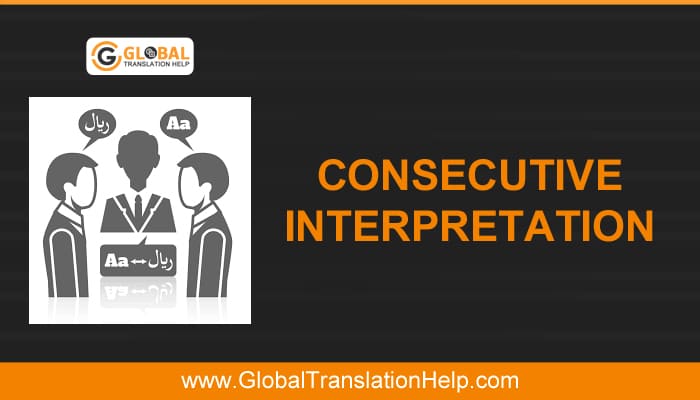CONSECUTIVE INTERPRETATION- INTRODUCTION
Consecutive interpretation is a form of interpretation that involves the verbal conversion of a speech from one language to another. The interpreter verbally translates the content while the speaker presents the speech. To clarify, an interpreter begins to deliver messages in a target language when a speaker pauses his/her speech or conversation.

During the speech, there are pauses or breaks between sentences when each party is speaking. In other words, the interpreter listens then interprets. Therefore, a good interpreter will be one with good listening skills and proficiency in the target language. Moreover, in consecutive interpreting, the interpreter reproduces what the speaker has said for the audience. He is normally standing or sitting close to the speaker, uses a pad and pen to take notes. In addition, he may use a microphone to speak only once the speaker finishes his part.
USES AND BENEFITS OF CONSECUTIVE INTERPRETATION SERVICES
In consecutive interpreting, the speaker may speak without interruption. Consequently, an interpreter is not to memorize words but to recreate the meaning of the information from the speaker. There are various areas where we use consecutive language interpretations. For example, medical appointments, confidential hearings, company sales meetings, business presentations, and annual summary meetings, etc.
Interpretation consecutively is done in person or live to the target audience of the discourse. Therefore, the interpreter’s physical appearance should be adequate for the context of the event. Moreover, it may also be suitable for video conferences and phone calls in any language.
Consecutive interpretation is advantageous when the user is to render speeches, press conferences, training activities, etc. However, it is vital that the interpreters should have all the necessary information beforehand for accuracy. Moreover, it allows two or more people to have an uninterrupted conversation. However such interpretations may be lengthy but it’s faster to adapt the translation of the speech to the proper context. Web seminars, Video Remote Interpreting (VRI), Over phone Interpretation, process interpretation are the most common methods of consecutive interpretations.
DISADVANTAGES OF AVAILING CONSECUTIVE INTERPRETATONS
While consecutive interpretation is less complex than simultaneous interpretation, there are also issues that crop up, such as:
-
- The interpreter may not be able to take notes or listen to something else
- The speaker may forget to stop for the interpreter to talk
- Mostly, the speakers talk fast and the interpret may face difficulties in understanding
- If there is some noise barrier, the interpreter may not be able to listen to the speech and may interpret wrong information
- Speaker stopping too early or too frequently, making it difficult to understand the idea he wants to get across
- Speaker may not be cooperative and they both may have some disagreement.
DIFFERENCE BETWEEN CONSECUTIVE AND SIMULTANEOUS INTERPRETATION
Even though consecutive and simultaneous interpreting services aim at verbally explaining the content to the audience, they are quite different. Both bridge language barriers and help people understand each other. But it’s important to understand their differences so you can identify which one is best for your particular use case. The following are the points of difference between consecutive and simultaneous interpretation:
- Simultaneous interpreters listen to what the speaker is saying while concurrently saying it in another language. That is to say both speaker and simultaneous interpreter speak at the same time. However, in consecutive interpretation, the interpreter waits for the speaker to finish the speech and then interprets.
- Ideally, simultaneous interpreters review speeches or other materials available before the event to prepare. Consecutive interpreters have to be diligent, speedy note-takers and be able to swap between both languages throughout the exchange.
- Simultaneous interpretation requires concentration, mental flexibility, and wide-ranging vocabulary in both languages. Whereas, the other one needs excellent short-term and long-term memory, note-taking skills, a grasp of subtle nuances in both languages.
- Simultaneous interpreting works for large, live events because interpreting happens in real-time. Consecutive interpretation needs time and therefore is for small gatherings or one-on-one meetings where the conversation allows for pauses to interpret.
Moreover, there are many online translation agencies that offer both these interpretation services. Therefore, choose wisely the type of interpretation you may need.
